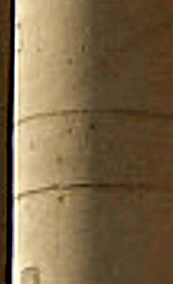Sheffield Blitz facts for kids
Quick facts for kids Sheffield Blitz |
|||||||
|---|---|---|---|---|---|---|---|
| Part of the Strategic bombing campaign of the Second World War | |||||||
 Devastation in Sheffield city centre after the Blitz |
|||||||
|
|||||||
| Belligerents | |||||||
| Commanders and leaders | |||||||
|
|
||||||
| Casualties and losses | |||||||
|
Unknown | ||||||
The Sheffield Blitz was a series of heavy air raids by the German air force, known as the Luftwaffe, on the city of Sheffield, England, during the Second World War. These attacks happened at night on December 12 and 15, 1940. Sheffield was a very important city for making steel and weapons needed for the war.
In 1940, Sheffield was home to about 560,000 people. Its main industries focused on making steel and armaments (weapons). One factory, Hadfields, was the only place in the UK that could make special 18-inch armour-piercing shells. Most of these important factories were located in the East End of the city, near the River Don. Secret German documents found after the war showed that their targets included several steelworks and other industrial sites.
The attacks were planned for nights when the full moon would make it easier for the planes to see. Both nights of the Blitz were cold and clear. The German name for this operation was Schmelztiegel, which means "Crucible."
Contents
What Happened on December 12?
On the afternoon of Thursday, December 12, British listening stations picked up signals from German radio beams. These beams helped German planes navigate and showed that Sheffield was likely the target.
Warnings were sent out to the city, with the final "red alert" sounding at 7:00 pm. The attack began with German planes, including "pathfinder" units, flying from airfields in northern France. These pathfinder planes arrived first to drop bombs that would start fires, guiding the main group of bombers.
The first bombs fell over areas like Norton Lees and Gleadless. Then, waves of many more German planes, including Junkers 88s and Heinkel 111s, flew over the city.
Around 9:30 pm, bombs hit Campo Lane and Vicar Lane, badly damaging the west side of the Cathedral. Later, a large bomb destroyed buildings near the Marples Hotel in Fitzalan Square.
At 11:44 pm, the Marples Hotel itself was directly hit. This was the single worst incident of the attacks, killing 78 people. Most of the bombs that night hit the city centre or homes, with the last bombs falling at 4:00 am.
What Happened on December 15?
The second night of the Blitz saw a new tactic from the German pathfinders. They only carried incendiary bombs, which are designed to start fires, instead of high-explosive bombs. On this night, 16 Heinkel 111 planes dropped thousands of incendiary bombs.
These bombs started 15 large fires and many smaller ones, which could be seen from over 150 kilometres away. The main attack was carried out by 50 Heinkel 111s and 11 Dornier 17s, finishing by 10:15 pm.
Many steelworks, including Hadfields and Brown Bayleys, were hit. However, the damage was not severe enough to stop them from making important war supplies.
The Aftermath of the Blitz
In total, over 660 people were killed, and more than 1,500 were injured. A huge number of people, over 40,000, lost their homes. About 3,000 homes were completely destroyed, and another 3,000 were badly damaged. In total, 78,000 homes suffered some damage.
Six George Medals were given to brave citizens of Sheffield for their actions during the raids. Many victims were buried together in a shared grave at City Road Cemetery.
Soon after the attacks, King George VI and Queen Elizabeth visited Sheffield to see the damage and encourage the survivors. The Prime Minister, Winston Churchill, also toured the bombed city. He spoke to a crowd of 20,000 people in Town Hall Square, giving his famous 'V' for 'Victory' V sign.
A Play About the Blitz
Operation Crucible is a play written by Kieran Knowles about the Sheffield Blitz. It has been performed in London, Sheffield, and New York, helping to tell the story of these difficult nights.



